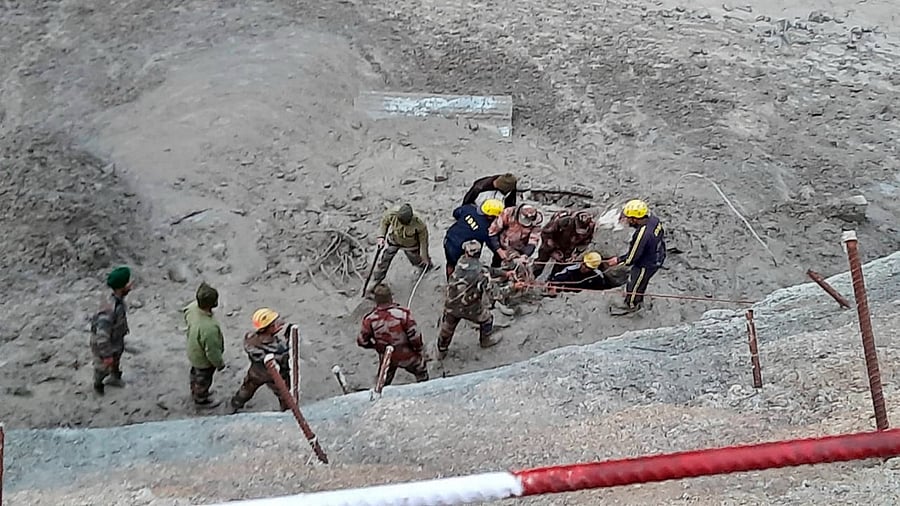
Scientists from Divecha Centre for Climate Change (DCCC) who had previously studied the Nanda Devi glacier in Chamoli, Uttarakhand, had warned that a glacial collapse would likely happen.
Dr Anil Kulkarni, a prominent glaciologist told DH that studies at many glacial lakes had revealed the risk of glacial bursts happening in the Alaknanda valley.
“In the entire Alaknanda valley, we have identified around 25-26 glacier lakes which can potentially cause a flood. Moreover, this particular glacier lake [at Nanda Devi glacier] was identified as being risky,” explained Dr Kulkarni, a Distinguished Scientist at the Centre, which is located in the Indian Institute of Science (IISc).
While he added that previous papers had suggested that the glacier bursts would happen in the monsoon, there is no reason to think it would not happen in winter. “This is a classical case stemming from climate change,” he said.
Another scientist added that the glacial burst was not entirely unexpected in the scientific community even though it caught the government off-guard. “Everyone in the scientific community thought it was coming. This is the disconnect between the scientific community and the government,” the scientist said.
Scientists believe that the February 7 burst was likely caused by the build-up of water underneath or adjacent to the glacier, prompted by rising temperatures and ice melt. “As of now, based on our previous study and what we know so far about this incident, I think it is it safe to say that some kind of outburst of the glacier lake has taken place,” Dr Kuklarni said.
He added that such bursts can be nipped in the bud in most cases, and pointed to the similar case of an expanding glacier lake in Sikkim in 2016.
“The experts from Isro had said it could potentially cause a flash flood. The Chief Minister took it seriously. There was a special committee formed by the central government which I was chairing. After extensive studies, we suggested a mechanism by which you can reduce the volume of lake water, through tightening and widening of channels,” he said.
He added, however, that the effort had worked because of timely intervention and cooperation between the scientific community, the political leadership, plus the army and the Defense Research and Development Organization (DRDO).
